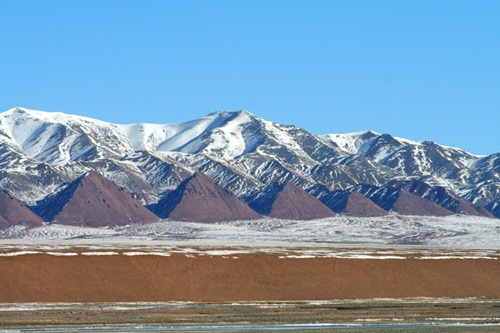| News |
| Latest news | |
| Int’l Cooperation activities | |
| Events & Announcement | |
| Recent Activities |
| Location: Home>News>Latest news |
| Secret-revealing expedition to Kekexili accomplished |
Under the support of the CAS Knowledge Innovation Project “intra-continental subduction and orogenic role on the Tibetan Plateau,’ together with auspices from national enterprises as CMN,CPC, T’Tiss, Tangulha Pharmaceutics and Legend, Prof Ding Lin has recently accomplished a large-scale comprehensive expeditions to Kekexili, which is a move within a three-year scientific expedition project of the CAS. The expedition this year mainly targeted at northern and southern buffer areas in Kekexili Natural Reserve and some selected areas therein. Beginning on Oct 10, 2006, this is the second comprehensive scientific expedition to Kekexili since the last one in 1990. The expedition last for over forty days, covering more than The scientific aspects of the expedition included geology, animal, plants, glaciers, ecology and so on. To be exact, in respect to geology, scientific staff focused on the uplift process and mechanism of the central mountains in Kekexili, as well as the influence of such an uplift on environment on northern Tibetan Plateau. As regards to animals, ecological customs and over-winter clime for the Tibetan antelopes were studied, together with the role of Ochotona in the ecological chain in kekexili. Concerning the plants, the staff collected seeds of the plants in the region and took note of the distribution of plant populations. Particularly studied was the distribution of Potamogeton distinctus A.Bennett, whose correlation with the alteration of the Yangtze origin pointed to the fact that, the uplift of northern Plateau as a central mountain champions the largest divide in Asia, influencing the ecology, The expedition also made to the three giant glaciers in the region, namely the Bukadaban Glacier, Malan Glacier and Geladandong Glacier, and found out their retreat at different levels comparing with relevant data gained in the 1990 expedition. Global warming also made its impact on the region, judging from the rising lake levels and intruding brown bears in as late as mid-November. Ecological deterioration was also obvious there, as living space for wild animals was restrained, food chain destroyed, and brown bears running into contradiction with farmers. Apart from the Tertiary volcanic belts, intrusive magna in the region, and the newly formed faults from 2001

|

